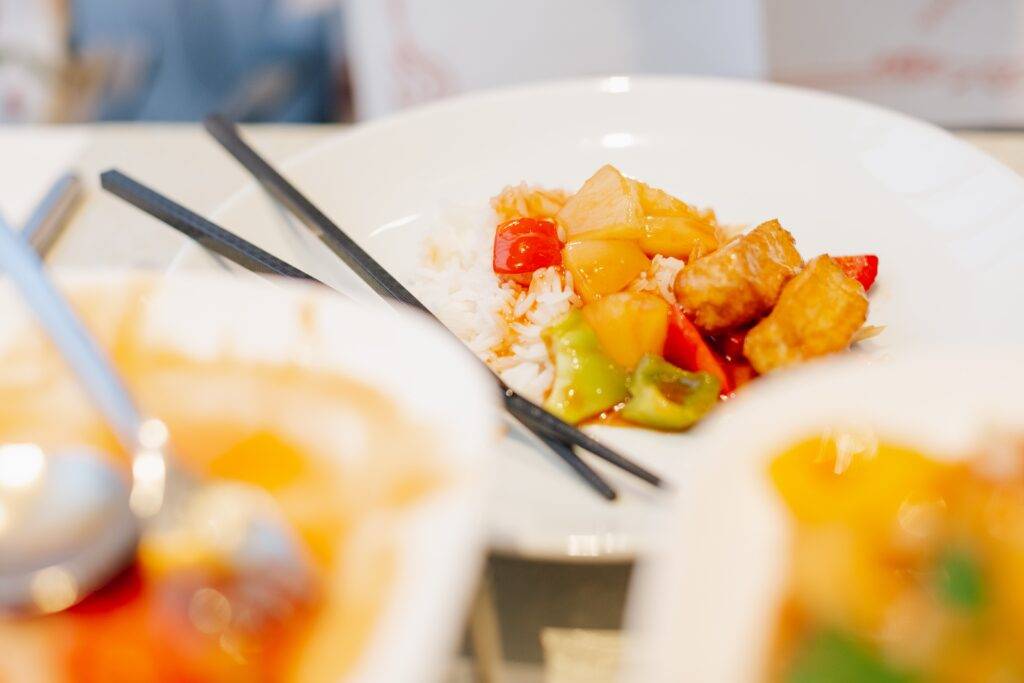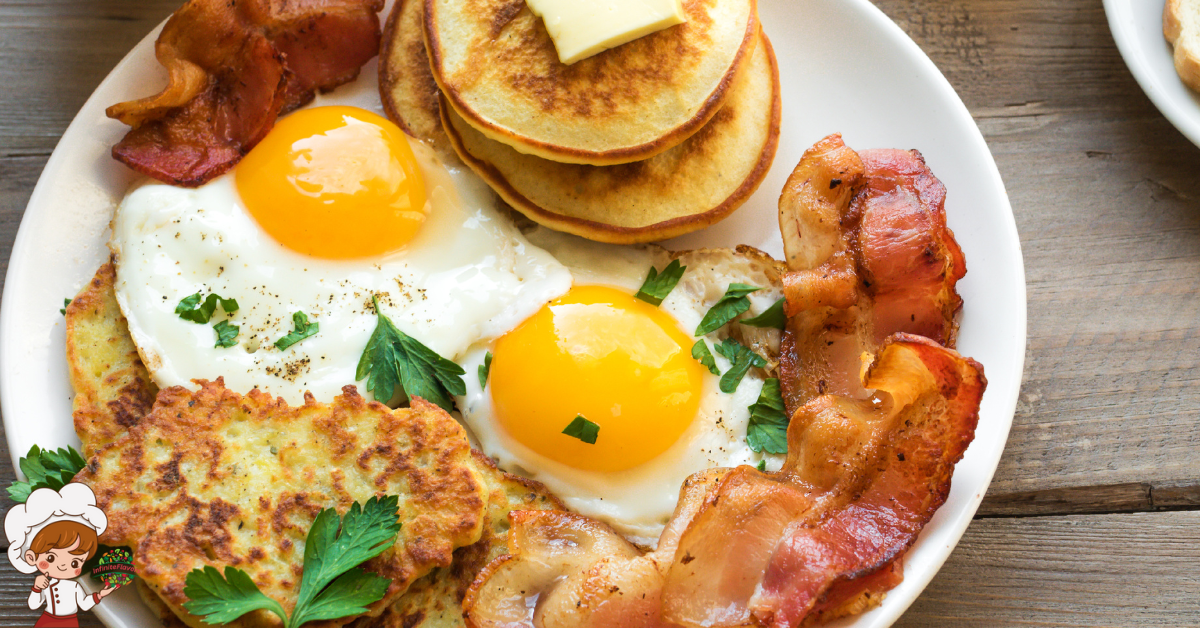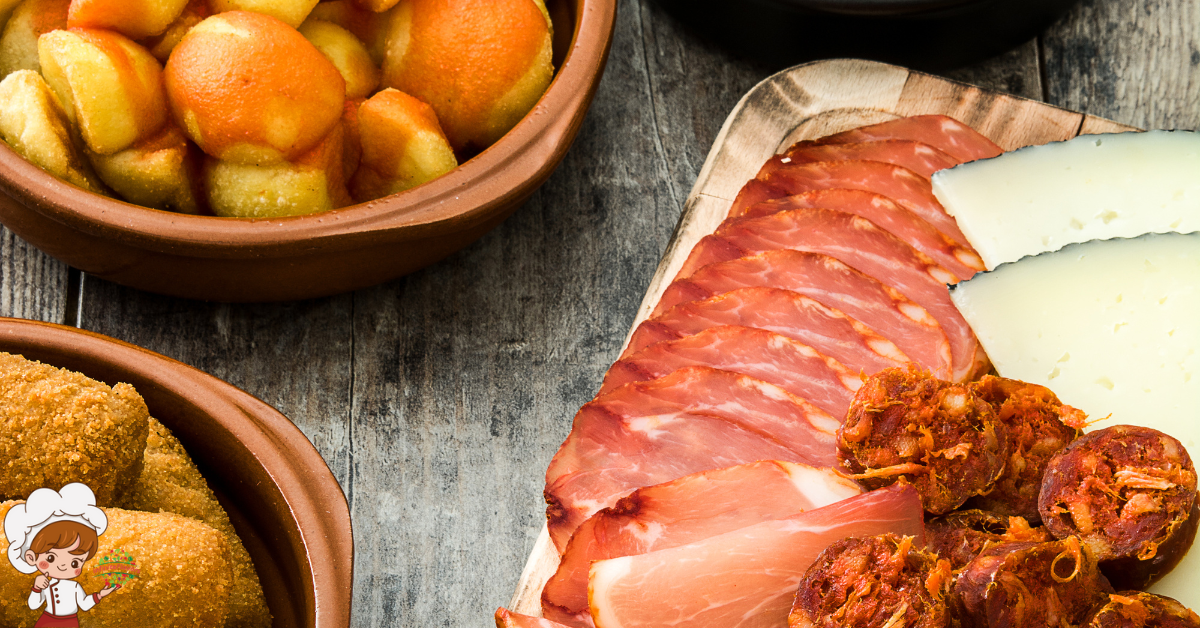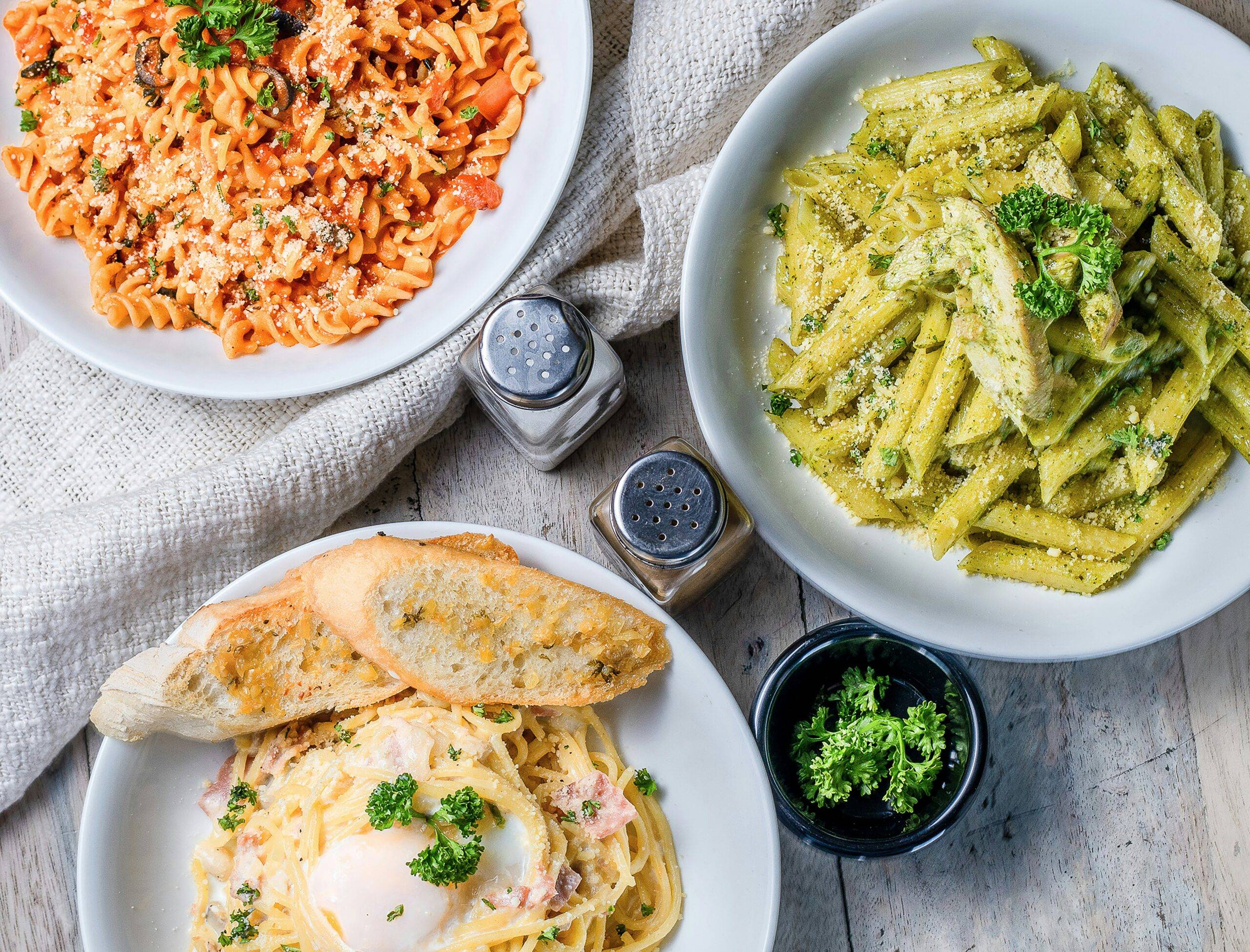Exploring The Exciting Fusion Of Chinese And Western Cuisines

Chinese And Western Cuisines: Have you ever tasted a dish that combines the bold flavors of Chinese cuisine with the familiar tastes of the West? Exploring the fusion of Chinese and Western cuisines is like embarking on a culinary adventure, where traditional flavors collide and create something entirely new and exciting.
From dishes that blend the richness of Peking duck with the crispiness of French pastries, to desserts that infuse the sweetness of mango with the creaminess of cheesecake, this fusion of two culinary worlds is a testament to the creativity and innovation of chefs around the globe. By blending traditional techniques and ingredients with modern twists, the fusion movement has created a whole new way for food lovers to experience the best of both worlds. Join us as we dive into this fascinating culinary journey and explore the endless possibilities of Chinese and Western fusion cuisine.
Origins of Chinese and Western Fusion
The origins of Chinese and Western fusion can be traced back to the early interactions between Chinese immigrants and Western settlers. These interactions led to a cultural impact that eventually influenced the popularity of fusion cuisine. When Chinese immigrants began to settle in Western countries, they brought with them their culinary traditions and techniques. However, due to the limited availability of authentic ingredients, they had to adapt their dishes to the local produce. This led to the birth of Chinese-American cuisine, which blended Chinese flavors with Western cooking styles.
As Chinese immigrants assimilated into Western society, their cuisine began to evolve even further. In an effort to cater to the tastes of their new customers, Chinese restaurants started incorporating Western ingredients such as cheese, mayonnaise, and butter into their dishes. This experimentation resulted in the creation of dishes like sweet and sour chicken, General Tso’s chicken, and fortune cookies, which are now staples of Chinese-American cuisine.
At the same time, Western settlers were also influenced by Chinese cuisine. They were intrigued by the exotic flavors and unique cooking techniques of the Chinese. This curiosity led to the creation of dishes like chop suey, which attempted to mimic Chinese stir-fry dishes using Western ingredients.
The cultural impact of these early interactions between Chinese immigrants and Western settlers cannot be understated. It not only gave rise to the popularity of fusion cuisine, but it also fostered a greater appreciation and understanding of different cultures. Today, Chinese and Western fusion cuisine can be found in restaurants all over the world, showcasing the harmonious marriage of flavors and techniques from both culinary traditions.
Key Flavors and Ingredients in Fusion Cuisine
To understand the essence of fusion cuisine, explore the key flavors and ingredients that harmoniously blend Chinese and Western culinary traditions. Fusion cuisine brings together the key flavors and ingredients of Chinese and Western culinary traditions, incorporating traditional techniques to create unique and exciting dishes. Here are four essential elements that contribute to the fusion of these two distinct culinary worlds:
- Soy Sauce: This classic Chinese ingredient adds depth and umami to Western dishes, enhancing their flavor profiles. Whether used in marinades, dressings, or as a dipping sauce, soy sauce brings a savory and salty note that complements a wide range of ingredients.
- Ginger: With its aromatic and slightly spicy flavor, ginger is a staple in both Chinese and Western cuisines. Its versatility allows it to be used in both sweet and savory dishes, adding a zing of freshness and complexity to fusion creations.
- Olive Oil: A key ingredient in Western cooking, olive oil is often used as a healthier alternative to traditional Chinese cooking oils. Its rich and fruity flavor can be incorporated into stir-fries, sauces, and dressings, providing a smooth and delicate taste.
- Herbs and Spices: The fusion of Chinese and Western cuisines opens up a world of possibilities when it comes to herbs and spices. From cilantro and basil to thyme and rosemary, the combination of these aromatic ingredients adds layers of flavor and complexity to fusion dishes.
Classic Chinese Dishes With a Western Twist
Explore how classic Chinese dishes take on a Western twist, incorporating innovative techniques and ingredients to create a fusion of flavors and culinary traditions. When it comes to classic Chinese dishes with a Western twist, fusion cooking techniques play a crucial role in bringing together the best of both worlds. These dishes often combine traditional Chinese flavors and ingredients with Western cooking methods and ingredients, resulting in unique and exciting culinary creations.
One example of a classic Chinese dish with a Western twist is General Tso’s chicken. Originating from Hunan province in China, this dish traditionally consists of deep-fried chicken pieces coated in a sweet and spicy sauce. However, in the Western adaptation, the chicken is often breaded and served with a tangy sauce that incorporates ingredients like ketchup, vinegar, and Worcestershire sauce. This fusion of flavors creates a dish that is both familiar and new, appealing to a wider range of palates.
Another classic Chinese dish that has received a Western twist is the spring roll. In traditional Chinese cuisine, spring rolls are typically filled with a combination of vegetables, meat, and sometimes seafood. However, in the Western adaptation, the filling may also include ingredients like cheese, ham, or bacon. The rolls are then fried until crispy and served with dipping sauces such as sweet and sour or soy sauce. This fusion of ingredients adds a savory and indulgent element to the dish, making it a popular choice among Western diners.
Incorporating fusion cooking techniques into classic Chinese dishes not only adds a new dimension of flavor, but also allows for a creative and innovative approach to cooking. By combining the best of both Chinese and Western culinary traditions, these dishes offer a unique dining experience that is sure to satisfy even the most discerning palates. So, why not embark on a culinary adventure and try some classic Chinese dishes with a Western twist? You might just discover a new favorite dish that marries the best of both worlds.
Iconic Western Dishes With a Chinese Twist
Discover how iconic Western dishes take on a Chinese twist, infusing them with unique flavors and culinary techniques. The fusion of Chinese and Western cuisines has brought about innovative flavor combinations and cultural influences that have transformed traditional Western dishes into exciting new creations. Here are four iconic Western dishes that have been given a Chinese twist:
- Sweet and Sour Chicken: This classic Chinese dish has been adapted to Western palates by incorporating the sweet and tangy flavors of Chinese cuisine. The chicken is coated in a crispy batter and then stir-fried with a sauce made from vinegar, sugar, and soy sauce. The result is a delightful combination of sweet, sour, and savory flavors.
- Kung Pao Pizza: Combining the flavors of Kung Pao chicken and the beloved Western dish, pizza, this fusion creation is a unique culinary experience. The pizza is topped with diced chicken, peanuts, vegetables, and a spicy sauce, giving it a distinctly Chinese twist.
- General Tso’s Burger: This fusion dish combines the bold flavors of General Tso’s chicken with the classic American burger. The chicken is marinated in a Chinese-inspired sauce and then grilled to perfection. It is then placed on a bun with lettuce, tomato, and mayonnaise, creating a mouthwatering combination of East meets West.
- Szechuan Mac and Cheese: Taking the comfort food of mac and cheese to the next level, this Chinese-inspired version adds a spicy kick. The macaroni is cooked in a creamy cheese sauce infused with Szechuan peppercorns and chili oil, resulting in a dish that is both familiar and exciting.
These iconic Western dishes with a Chinese twist showcase the creativity and ingenuity of fusion cuisine. By blending different culinary traditions, innovative flavor combinations are created, resulting in dishes that are both familiar and new. Cultural influences are woven together to produce exciting and delicious culinary experiences that delight the senses.
Innovations in Fusion Culinary Techniques
One innovative fusion culinary technique is incorporating Chinese and Western flavors through the use of unique cooking methods. This approach allows chefs to create dishes that combine the best of both worlds, resulting in exciting and delicious flavor profiles. By blending traditional Chinese ingredients and techniques with Western cooking styles, chefs can create innovative and mouth-watering dishes that push the boundaries of culinary creativity.
One example of this fusion technique is the use of stir-frying with a Western twist. Stir-frying is a staple cooking method in Chinese cuisine, known for its quick and high-heat cooking style. By applying this technique to Western ingredients such as steak or chicken, chefs can create dishes that have a perfect balance of flavors and textures.
Another innovative fusion technique is the use of marinades and glazes. Chinese cuisine is famous for its flavorful marinades, while Western cuisine often relies on rich and savory glazes. By combining these two techniques, chefs can create dishes that have a unique and complex flavor profile. For example, marinating a Western-style steak with a Chinese-inspired soy and ginger marinade can result in a dish that is both tender and packed with umami flavors.
Furthermore, the fusion of flavors and techniques extends to the use of spices and seasonings. Chinese cuisine is known for its bold and aromatic spices, while Western cuisine often emphasizes herbs and subtle seasonings. By combining these different flavor profiles, chefs can create dishes that are both exciting and harmonious. For instance, incorporating Chinese five-spice powder into a classic Western dish like roasted chicken adds a depth of flavor that is unexpected and delicious.
Celebrity Chefs and Restaurants Leading the Fusion Movement
When it comes to the fusion movement in Chinese and Western cuisines, celebrity chefs and cutting-edge restaurants have played a pivotal role in pushing the boundaries and creating innovative dishes. These influential chefs, with their mastery of both culinary traditions, have paved the way for a new wave of fusion cooking that combines the best of both worlds. Their restaurants serve as platforms for experimentation, where diners can savor the exciting flavors and unique combinations that result from this fusion of cultures.
Influential Celebrity Chef(S)
Explore the culinary creations of influential celebrity chefs and the leading restaurants that are spearheading the fusion movement between Chinese and Western cuisines. These chefs have revolutionized the culinary world by blending traditional Chinese flavors and cooking techniques with Western ingredients and cooking styles. Their innovative dishes not only showcase the harmonious marriage of these two distinct culinary traditions but also push the boundaries of flavor and presentation.
From the bold and creative dishes of celebrity chef Peter Chang to the refined and elegant creations of chef Susur Lee, these influential chefs have become trailblazers in the fusion culinary trend. Other notable chefs and restaurants leading the fusion movement include Stephanie Izard’s Duck Duck Goat, which combines Chinese street food with a modern twist, and Andrew Wong’s A.Wong, known for its contemporary interpretations of classic Chinese dishes. These culinary visionaries continue to inspire and shape the future of Chinese and Western fusion cuisine.
Cutting-Edge Fusion Restaurants
Now let’s delve into the realm of cutting-edge fusion restaurants, where celebrity chefs and leading establishments are at the forefront of the Chinese and Western culinary fusion movement. These restaurants are pushing the boundaries of traditional cuisine by incorporating cutting-edge fusion techniques to create unique dining experiences.
From innovative flavor combinations to creative presentation, these establishments are redefining what it means to blend Chinese and Western flavors. Celebrity chefs like David Chang and Wolfgang Puck are leading the way with their bold experimentation and inventive menus. Diners can expect to find dishes that seamlessly combine ingredients and techniques from both culinary traditions, resulting in a harmonious fusion of flavors. These cutting-edge fusion restaurants offer a truly extraordinary dining experience that is both familiar and exciting, making them a must-visit for food enthusiasts seeking something new and innovative.
Exploring the Future of Chinese and Western Fusion Cuisine
In this article, you will discover the exciting possibilities that lie ahead for the fusion of Chinese and Western cuisines. As this culinary trend continues to gain popularity, it is interesting to explore the future trends and cultural influences that will shape this unique fusion.
- *Innovative Flavors*: The future of Chinese and Western fusion cuisine holds the promise of even more daring and inventive flavor combinations. Chefs will continue to push boundaries by blending traditional Chinese ingredients with Western techniques and ingredients, resulting in unexpected and delicious dishes.
- *Health-Conscious Options*: With an increasing emphasis on health and wellness, the fusion of Chinese and Western cuisines will likely see a rise in healthier options. This could include the incorporation of more plant-based ingredients, as well as the use of lighter cooking techniques to create dishes that are both flavorful and nutritious.
- *Sustainable Practices*: As environmental concerns become more prevalent, the future of fusion cuisine will likely incorporate sustainable practices. Chefs will strive to source local and seasonal ingredients, reducing carbon footprints. Additionally, there may be a focus on reducing food waste and utilizing every part of an ingredient to create innovative dishes.
- *Cultural Exchange*: The fusion of Chinese and Western cuisines is a perfect example of cultural exchange. In the future, this trend will continue to bridge the gap between different culinary traditions, fostering a greater appreciation for both Chinese and Western cultures. This cross-pollination of flavors and techniques will lead to a richer and more diverse culinary landscape.
Conclusion: Chinese And Western Cuisines
In conclusion, the fusion of Chinese and Western cuisines has created a tantalizing blend of flavors and techniques that captivate the taste buds. By combining traditional Chinese dishes with a Western twist and iconic Western dishes with a Chinese influence, chefs have brought a new dimension to the culinary world. With innovative techniques and the creativity of celebrity chefs, this fusion movement is continuously evolving. The future of Chinese and Western fusion cuisine holds endless possibilities and promises to delight food enthusiasts for years to come.








